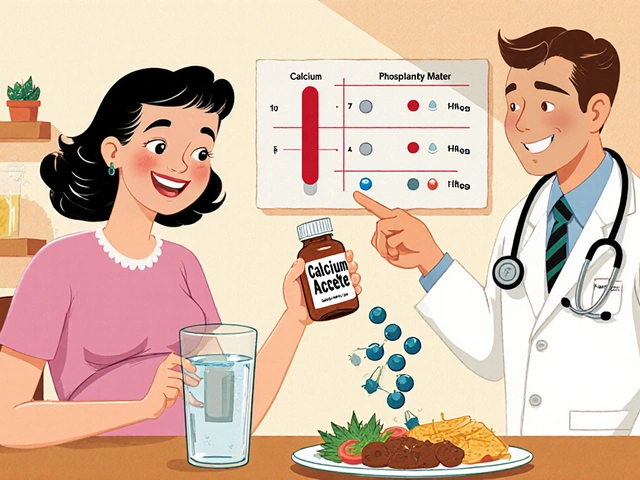Osteoporosis Medication Schedule: What You Need to Know
If you’ve been told you have osteoporosis, the biggest challenge isn’t just the diagnosis – it’s making sure you take the right medicines at the right time. A solid medication schedule keeps bone‑loss drugs working together, reduces side‑effects, and helps you avoid missed doses that can set you back.
Most doctors prescribe a mix of bisphosphonates, calcium, vitamin D, and sometimes hormone‑related meds. Each has its own timing rules, so a one‑size‑fits‑all approach won’t cut it. Below you’ll find a quick‑read guide that breaks down why timing matters and how to create a routine you can actually follow.
Why Timing Matters
Bisphosphonates (like alendronate or risedronate) need an empty stomach and at least 30 minutes of upright time after you swallow them. If you eat or lie down too soon, the drug can irritate your throat or not absorb properly, lowering its effectiveness.
Calcium and vitamin D are best taken with meals that contain a little fat. That helps your body soak up the nutrients, and it also prevents the nasty stomach upset some people feel when they take calcium alone.
Hormone‑related therapies, such as selective estrogen receptor modulators (SERMs), often have specific daily windows to keep blood levels steady. Missing a dose can cause withdrawal symptoms or reduce the drug’s protective effect on bone.
How to Build Your Personal Schedule
1. List every prescription. Write down the name, dose, and special instructions (fasting, with food, etc.). A simple notebook or a smartphone note works.
2. Match meds to your daily routine. If you need to be upright for 30 minutes after a bisphosphonate, slot it first thing in the morning before coffee, or right after dinner when you’re already up.
3. Set reminders. Use phone alarms, a pill‑box with compartments, or a habit‑tracking app. The cue (like “brush teeth”) should trigger the med.
4. Combine compatible meds. Calcium and vitamin D can go together with lunch or dinner, while a weekly bisphosphonate can sit on a calendar reminder instead of daily alerts.
5. Plan for refills. Mark the date you’ll need a new bottle a week before you run out. This avoids the panic of sudden gaps.
6. Check with your doctor. Anytime you’re unsure about spacing, call the clinic. They can adjust doses or suggest alternative drugs that fit your lifestyle better.
Don’t forget lifestyle tweaks that work hand‑in‑hand with meds. Weight‑bearing exercise (like brisk walking or light resistance training) boosts bone density, and limiting caffeine or alcohol helps the meds work more efficiently.
Finally, keep a short log of how you feel after each dose – any stomach upset, fatigue, or new aches. This info helps your doctor fine‑tune the schedule and catch problems early.
Sticking to an osteoporosis medication schedule isn’t a chore when you break it down into bite‑size steps. Write it out, set a cue, and treat your meds like any other important appointment. Your bones will thank you for the consistency.





